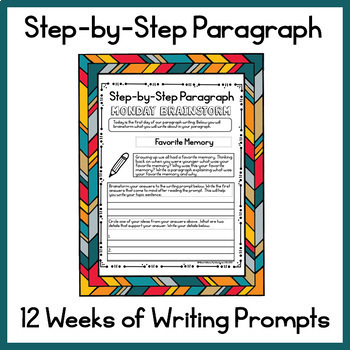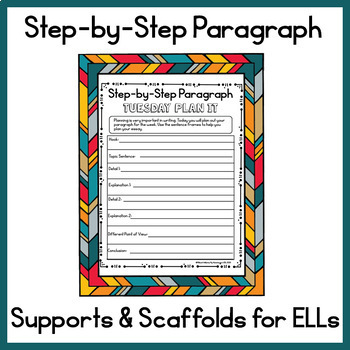- PDF
Description
Paragraph writing for English Language Learners are the foundation they need to be successful writers. ESL writing activities can help your English Language Learners succeed in their writing.
The Step-by-Step Paragraph is a way your ELLs can practice their writing every day in the classroom.
In this writing activity for ELLs there is a sample of Narrative Writing, Informational Writing, and Persuasive Writing for your ELLs!
Purchase the FULL Year of the Step-by-Step Paragraph Builder Bundle!
This product contains the following:
✔ Teacher Directions with tips to support newcomers
✔ Sentence Frames to support all levels of ELLs
✔ Prompts and brainstorming space
✔ Graphic Organizer that walks ELLs step-by-step how to write a high level paragraph
✔ An editing checklist
✔ Space for students to write their first and final draft
✔ A page where students can draw a photo to accompany their paragraph
Here are some ways you can use the Step-by-Step Paragraph Builder:
✔ Do Nows & Bellringers
✔ Homework
✔ Small Group Instruction
✔ Practice for Language Assessments
✔ Early Finishers
✔ Intervention





